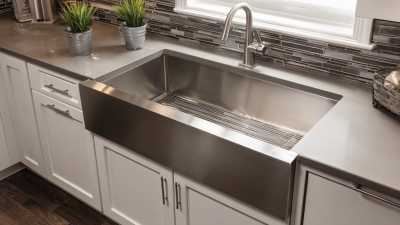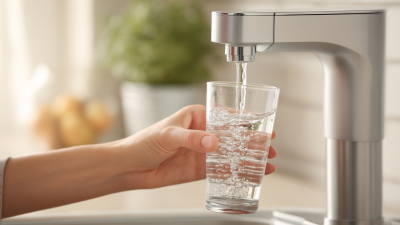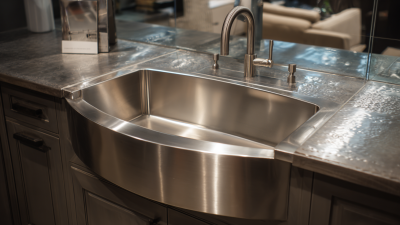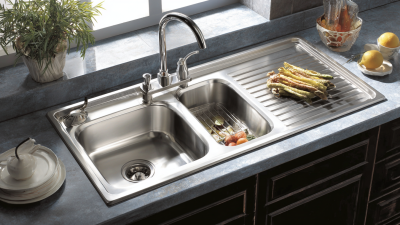When considering the ideal setup for your home, the selection of a Children's Sink can be a crucial yet often overlooked aspect. According to a recent report by the National Kitchen and Bath Association, the importance of designing children's spaces that foster independence and hygiene is paramount, with 75% of parents emphasizing the need for age-appropriate fixtures. A well-chosen sink not only accommodates the unique needs of children but also promotes good habits from a young age, enhancing their engagement with personal hygiene practices.
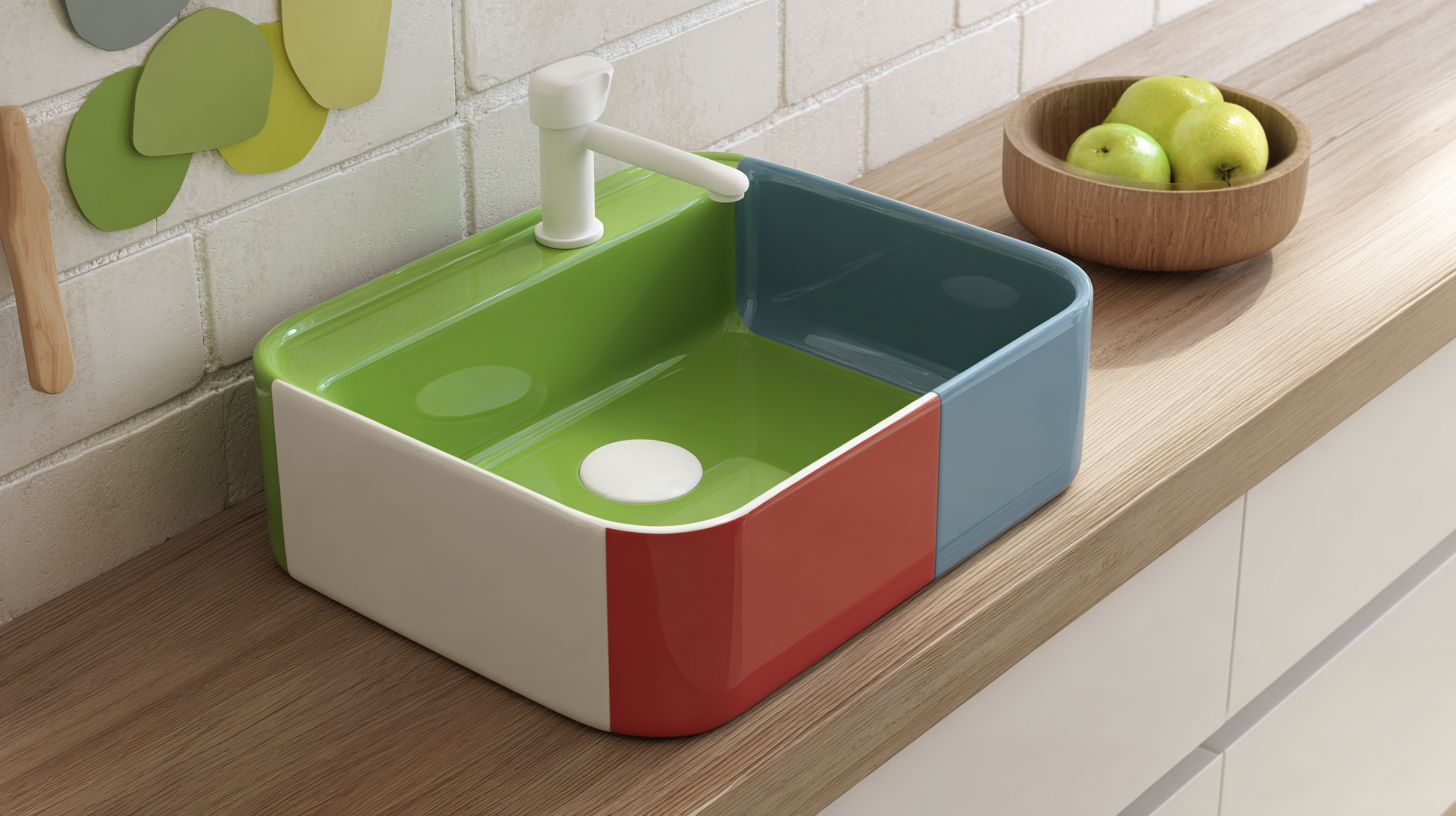
With numerous options on the market, understanding how to choose the perfect Children's Sink involves considering factors such as height, accessibility, and safety features, ensuring that all bathing and handwashing experiences are both enjoyable and practical for little ones. By making informed decisions, you can effectively create a harmonious balance between functionality and child-friendly design in your home.
When selecting the perfect sink for your child's space, measuring for the right size is crucial. According to the American Academy of Pediatrics, sinks designed for children should accommodate their height and reach to encourage independence in personal hygiene routines. Typically, a child’s sink should be around 24 to 30 inches from the floor, allowing them to use it comfortably without assistance. This height range not only supports accessibility but also promotes self-sufficiency, as studies show that children are more likely to engage in handwashing and other hygienic practices when they can easily reach the sink.
Furthermore, the American Society of Interior Designers emphasizes the importance of ergonomics in child-friendly spaces. By adhering to the recommended dimensions, you can create a more functional environment. A sink basin depth of approximately 6 to 8 inches is ideal, as it provides enough space for washing without splashing, making it practical for both youngsters and parents. Additionally, considering the faucet height is equally important; opting for models with a low spout can significantly enhance usability for children, further supporting their ability to manage their own hygiene while enjoying the process.

When selecting a children's sink for your home, the choice of material is paramount to ensure safety and durability. According to industry experts, certain materials outperform others in terms of longevity and resilience, making them ideal for high-usage environments like children’s bathrooms. Stainless steel, for example, is renowned for its durability and resistance to corrosion, while porcelain offers a smooth, easy-to-clean surface that minimizes bacteria buildup, making it a safer option for kids.
Furthermore, advancements in sustainable materials are gaining traction, aligning with the growing trend towards green building. Materials such as recycled glass and eco-friendly composites can provide both aesthetic appeal and environmental benefits, aligning with contemporary sustainability goals. Reports indicate that leveraging such materials not only contributes to a healthier home but also enhances the overall longevity of the sink, reducing the need for replacements. Prioritizing durable and safe materials in your selection will not only enhance the functionality of the sink but also ensure a safer, more sustainable space for children to use.
When selecting a children's sink for your home, the design and aesthetics play a crucial role in harmonizing with your existing decor. A sink that complements your home’s style not only enhances its visual appeal but also ensures that it becomes an integral part of the space. According to a report from the National Kitchen and Bath Association (NKBA), over 60% of homeowners prioritize design coherence when renovating functional spaces like kitchens and bathrooms. Therefore, choosing a sink with a color and style that aligns with your décor can create an inviting atmosphere for your children.
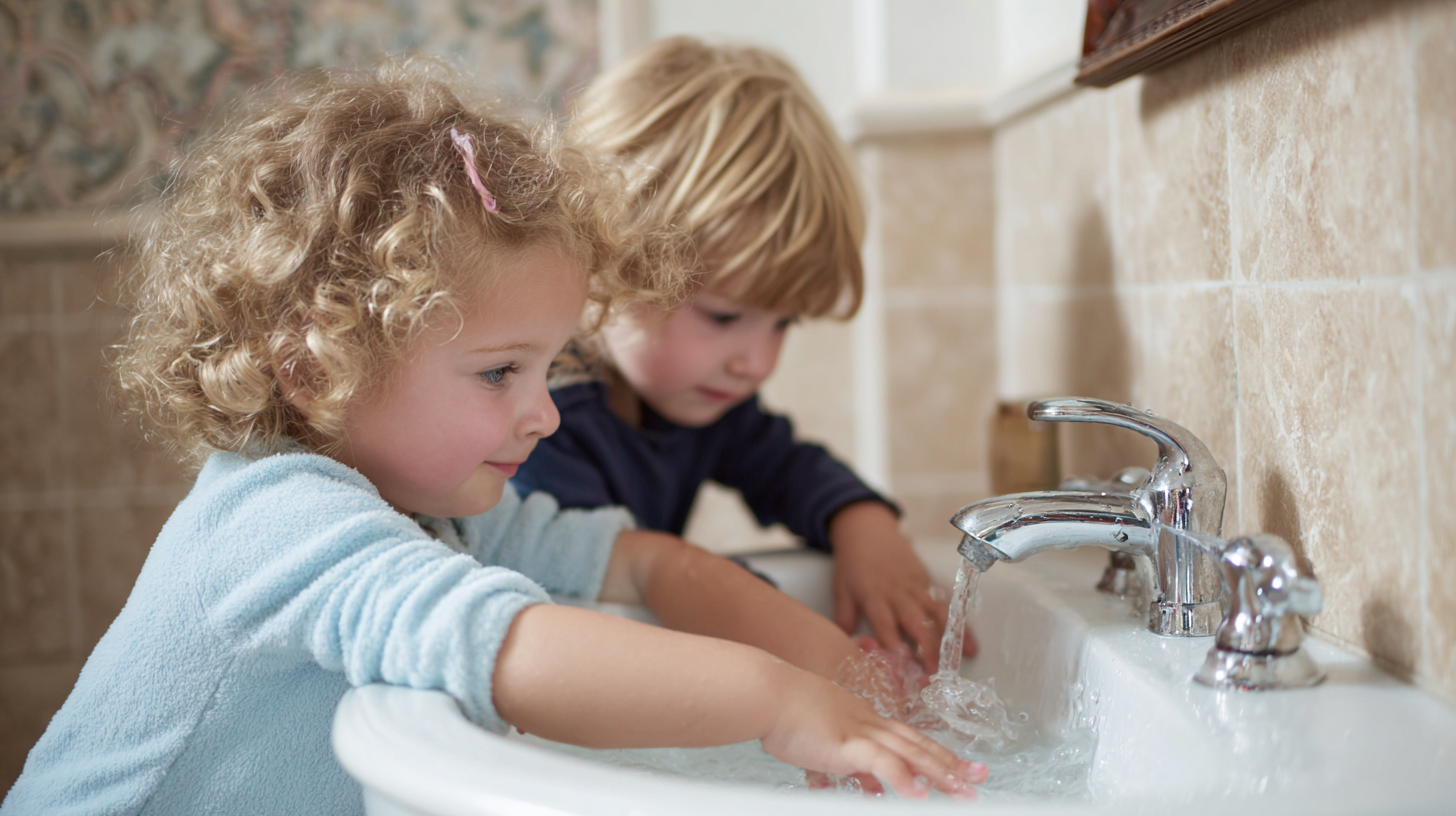
When considering design, prioritize materials that are both durable and visually appealing. For instance, ceramic sinks offer vibrant colors and patterns while being easy to clean, thereby matching seamlessly with playful or contemporary designs. One tip is to select a sink with rounded edges to emphasize safety, while also aligning with a modern aesthetic. Another suggestion is to choose fun, child-friendly designs that can be incorporated into the overall theme of your home, ensuring that your child feels ownership and delight in using their designated space.
Finally, consider the size and shape of the sink in relation to your overall bathroom or kitchen design. A smaller, whimsical sink can be a delightful focal point in a child's area, while also allowing adults ease of use. Implementing these tips can ultimately create a vibrant, safe, and intuitive environment that fosters independence for your children.
When selecting a children’s sink for your home,
safety features should be your top priority. According to the American Society for Testing and Materials (ASTM),
child-friendly sinks must be designed to prevent common injuries, such as slips and spills. Look for sinks with rounded edges
and non-slip surfaces, which can significantly reduce the risk of accidents.
A recent study published by the National Safety Council indicates that over 60% of injuries
involving children occur in the bathroom, highlighting the importance of thoughtful design.
Furthermore, consider materials that resist bacteria and are easy to clean. The Centers for Disease Control and Prevention (CDC)
emphasizes that sanitary conditions are crucial in reducing the risk of illnesses among children. Opt for sinks made from
antimicrobial materials, which can help combat the spread of germs.
Additionally, ensure that faucets are user-friendly, with temperature control to prevent scalding. A child-focused design not only fosters independence
but also promotes safety in everyday routines, making the right choice vital for your home's functionality and your child's wellbeing.
When choosing the perfect children's sink for your home, installation and maintenance are key factors that contribute significantly to its usability and longevity. One effective tip for easy setup is to ensure that the sink is installed at an appropriate height for children, promoting independence while minimizing strain during use. It’s advisable to consult with a professional if you're unsure about plumbing requirements or modifications needed to accommodate the sink, ensuring that everything is done correctly and efficiently.
For maintenance, selecting a sink made of durable, low-maintenance materials can save time and effort in the long run. Regular cleaning is essential, as it helps prevent stains and buildup, especially in a space that may face spills and messes. Using gentle, child-safe cleaning products can further ensure a safe environment while maintaining the aesthetics of your sink. Incorporating these installation and maintenance strategies will facilitate not only a smoother setup but also a lasting and practical addition to your home.
| Feature | Description | Maintenance Tips | Installation Tips |
|---|---|---|---|
| Material | Choose a durable and easy-to-clean material like stainless steel or porcelain. | Regularly clean with mild soap and water to avoid stains. | Ensure the sink is level during installation for proper drainage. |
| Size | Select a size that fits comfortably in your space while being accessible for kids. | Consider child height for easy use; taller sinks may need a stool. | Measure the area beforehand to avoid compatibility issues. |
| Faucet Type | Opt for a kid-friendly faucet that is easy to operate with small hands. | Check for leaks regularly to maintain functionality. | Install a faucet with a low spout for easy reach. |
| Safety Features | Look for rounded edges and non-toxic materials. | Inspect for any sharp edges and smooth them out. | Secure the sink properly to prevent tipping hazards. |
| Aesthetic | Choose a design that complements your home's decor and appeals to children. | Use finishes that reduce fingerprints and smudges. | Align the sink's design with other bathroom fixtures for a cohesive look. |
